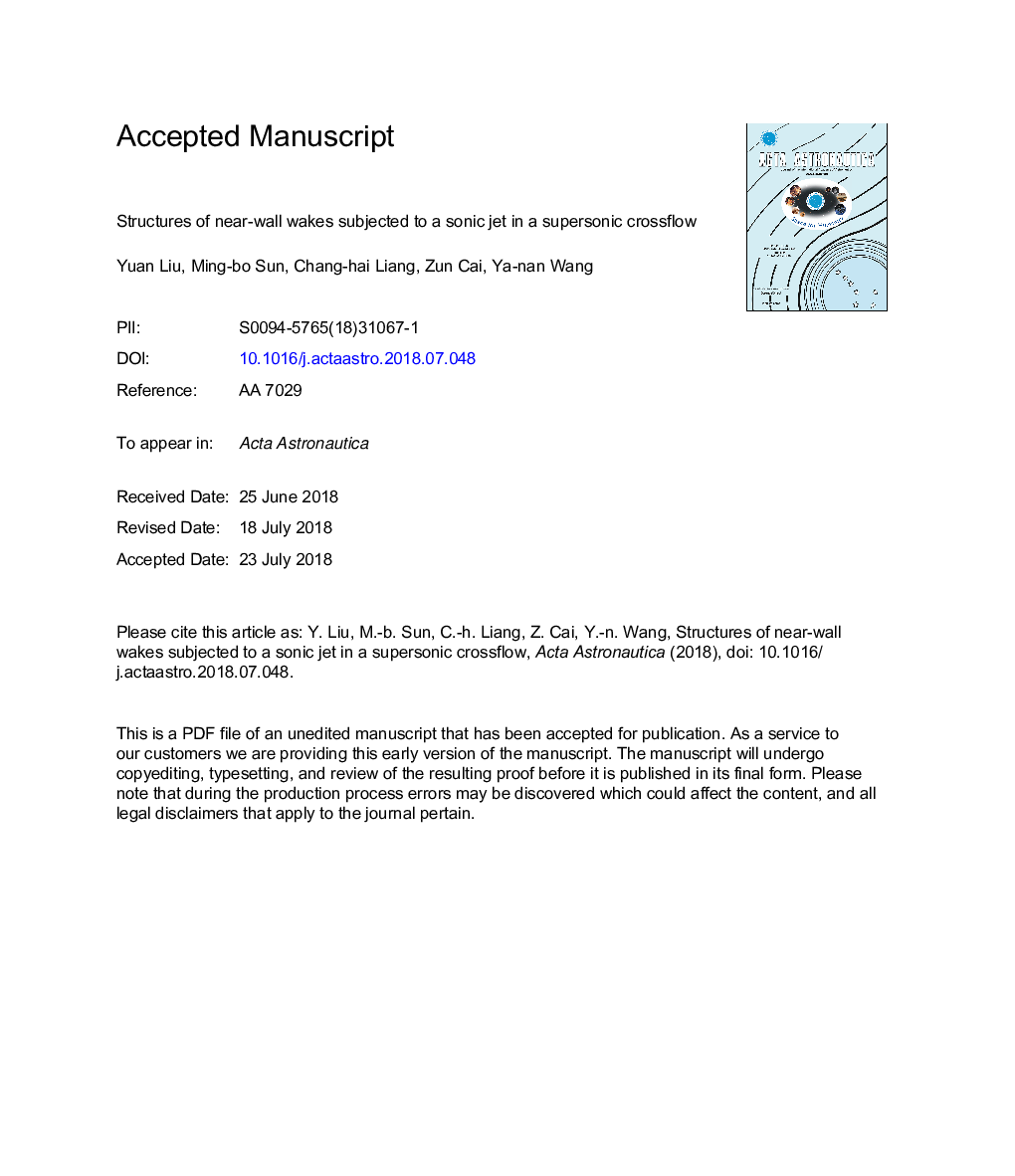| Article ID | Journal | Published Year | Pages | File Type |
|---|---|---|---|---|
| 8055461 | Acta Astronautica | 2018 | 18 Pages |
Abstract
Nanoparticle-based Planar Laser Scattering (NPLS) technology and Oil flow visualization are employed to investigate the wake flow of a sonic jet injected into a supersonic crossflow at Maâ¯=â¯2.95. Experiments are run for seven jet-to-crossflow momentum flux ratios (J) of 2.3, 5.5, 7.7, 11.2, 16.0, 20.6, and 28.9 of a sonic jet injected into a supersonic crossflow at Maâ¯=â¯2.95. Experimental results suggest that the near-wall wake zone could be divided into three regions: the V-shape separation region behind the jet, followed by the reattachment region and the mixing and recovery zone further downstream. Lower jet-to-crossflow momentum flux ratio cases always have shorter distance from the orifice to the interaction position of the V-shape collision shock and the reflected shock. The angle between the main separation lines is found to be independent of J. Correlations for predicting the separation length and width are proposed based on the experiments of different momentum flux ratios.
Keywords
Related Topics
Physical Sciences and Engineering
Engineering
Aerospace Engineering
Authors
Yuan Liu, Ming-bo Sun, Chang-hai Liang, Zun Cai, Ya-nan Wang,
